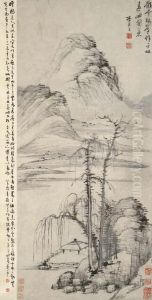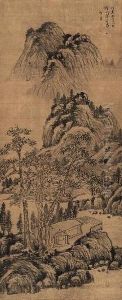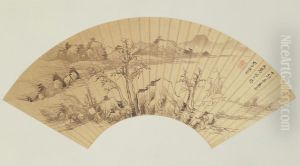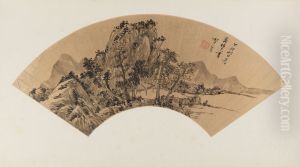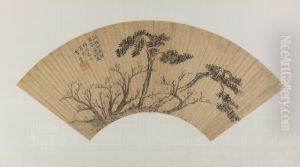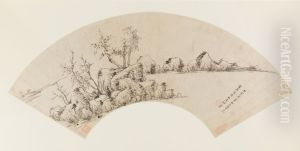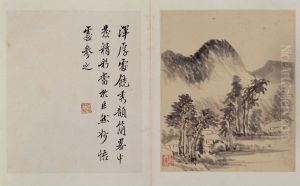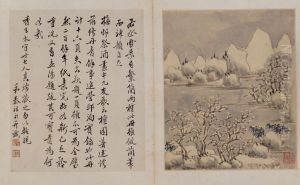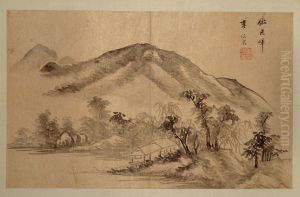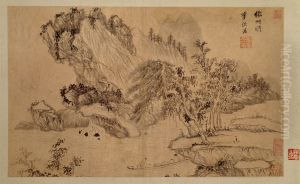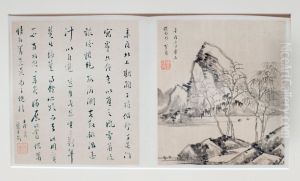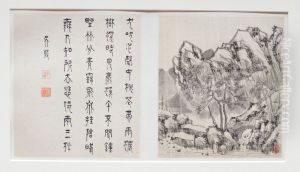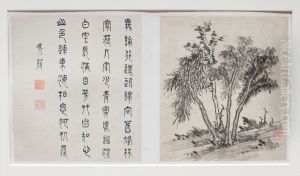Li Liufang Paintings
Li Liufang was a notable Chinese painter, calligrapher, poet, and scholar during the Ming dynasty. Born in 1575 in Wuxi, Jiangsu province, Li was a prominent figure in the Wu School of painting, which emphasized the importance of personal expression and the integration of poetry, calligraphy, and painting into a single artwork, a practice known as the 'Three Perfections.'
Li Liufang's artistic career flourished during a time of significant political, social, and cultural change in China. The late Ming period was characterized by a rich cultural development and an increased interest in individual expression and the arts of the literati, or scholar-officials. Li was well-educated and came from a family with strong scholarly and artistic traditions. This background allowed him to develop a broad range of skills that would come to distinguish his work.
As a painter, Li was renowned for his landscape paintings, which often featured sweeping vistas, detailed trees, and serene water scenes. His work exemplified the literati ideal of personal expression, as he infused his paintings with a sense of poetic melancholy and scholarly detachment. Li's paintings often included inscriptions or poems, which were integral to the overall composition and meaning of the work.
In addition to his paintings, Li Liufang was also a master calligrapher, with a style that was both fluid and disciplined. His calligraphy was highly regarded among his contemporaries and has been praised by generations of scholars and art connoisseurs since.
Li's poetry, too, was an important part of his artistic output, reflecting the intellectual and emotional depth of his character. His poems often explored themes of nature, solitude, and the passage of time, mirroring the motifs commonly found in his paintings.
Despite his success, Li Liufang's life was not without challenges. The political and social upheavals of the late Ming dynasty, including corruption within the imperial court and external threats, created a backdrop of uncertainty that influenced Li and his contemporaries. Nevertheless, Li's work remained a testament to his profound ability to capture the essence of the human spirit and the beauty of the natural world.
Li Liufang passed away in 1629, leaving behind a legacy that would influence Chinese painting and calligraphy for centuries to come. His works are held in high esteem and can be found in various museum collections, both within China and internationally. Li's life and art continue to be studied and appreciated as an integral part of the rich tapestry of Chinese cultural history.

